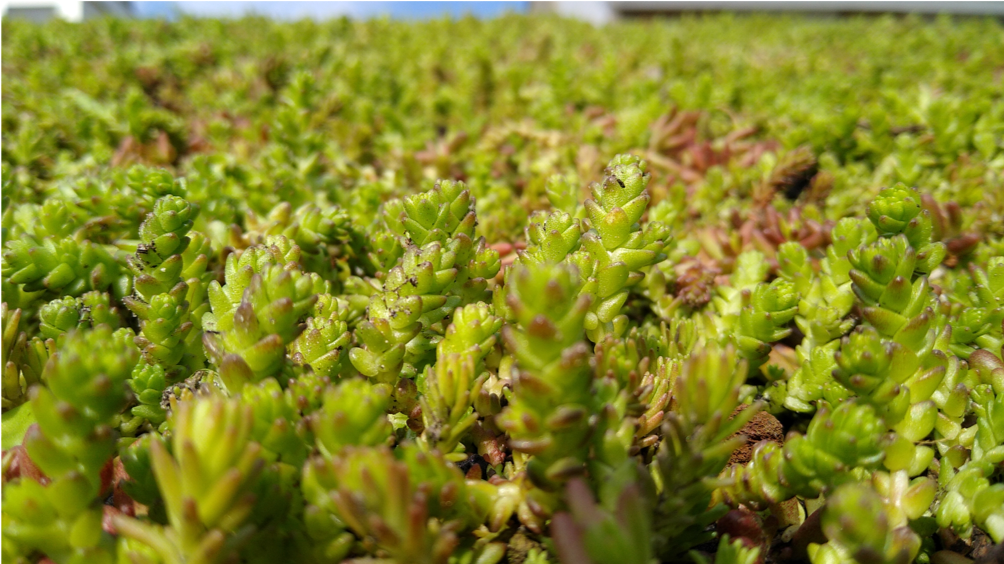by Vincent Post
We recently moved house and I was invited over for a coffee at one of our new neighbours. They told me that they were going to renovate their garden, everything was going to be torn out and replaced by something new. Including a little wooden shed that, despite its 10 year age, looked almost new. This set off an alarm bell with this responsible water scientist: All that beautiful wood chucked in a bin? So I asked if we could “adopt” the little shed and the neighbour was kind enough to donate it to us. After all he said, otherwise it would be thrown away anyway. He persuaded his landscaper to lift the entire shed on a truck, move it 40 m down the street and place it on our driveway.

And there it was. Even though it was delivered in one piece, we had to completely disassemble it because otherwise it could not fit through the door to our back garden. You will notice the roof in the picture, it consisted of shingles made from bitumen. Unfortunately, in taking apart the whole shed, the roof could not be rescued so the shingles had to be replaced with something new. As it happens, the council is promoting green (= vegetated) roofs so the idea was born: we would up-cycle the shed by equipping it with a green roof.

Before we could rebuild the house though, it needed a strong foundation that could carry the weight. When saturated, the green roof weighs nearly 55 kg/m2, so the roof alone is already more than 300 kg. For the foundation we used tiles and stone borders that we sourced according to the RWSCi principles of buying things. Instead of buying them new, we looked out for online ads from people that wanted to get rid of them. All within a 15 km radius from our home to minimise fuel consumption by transport. The sand was supplied by a supplier around the corner. When you are moving around all these materials you realise how heavy they are. And this little project is totally insignificant in comparison to all the other building activity that is going on in the world. Imagine the environmental transportation costs. Something to be mindful of!

It was very unfortunate that we could not rescue the bitumen shingles during the taking apart of the shed. What is perplexing is that this environmentally harmful product is one of the cheapest roof cover options available for sale in the DIY stores. After some research I ended up with an EPDM sheet as an alternative to make the roof waterproof. The internet is full of claims about it being environmentally-friendly and I am not too sure about those, but at least it is recyclable. Should the shed even reach the end of its lifetime, the sheet comes off again in one piece and can serve a new purpose.
Once the roof was waterproof, the big day came that the green roof could be installed. It actually consists of three layers: a drainage mat that forms the base, then a layer of rock wool that absorbs the water and the vegetation mats themselves. Unfortunately the drainage mat turned out to have lots of plastic fibers, so let’s hope they used recycled plastic for this. And the rock wool? Very hard to find reliable information on the internet about the environmental impact of this product. At least the company that we purchased the green roof from is committed to sustainability (for example, they try to make sure that the CO2 emissions by their delivery truck are minimised by taking the most efficient route between delivery addresses) so I hope they did their homework.
The end result looks great. And we hope that the environmental impact of our project, albeit tiny in the grand scheme of things, is offset by the benefits of the green roof over a conventional roof. It holds rainwater, can capture fine dust and provides habitat for insects, which the birds in our garden will surely appreciate.

As so often, sustainability comes at a price: The roof ended up costing nearly 400 euros while the bitumen shingles would have set us back only 50 euros or so. No wonder most people will think twice before choosing this option. Luckily, city councils are promoting green roofs by providing subsidies (150 euros in our case, thank you city council!). Obviously, a green roof is at the top range of roof cover options, and it is clear it should come at a certain cost, but how is it that the environmentally-unfriendly alternative comes out as the cheapest option? And not just in this case…
To end on a positive note: at least there was a happy ending for the wooden shed, which probably would have been burnt up had it been thrown away. Now it forms the base of a new microcosm of sedum plants and all the creatures this will attract, adding to the health of our garden ecosystem. That thought provide consolation for the environmental trade-offs we had to make in putting the shed back together!
